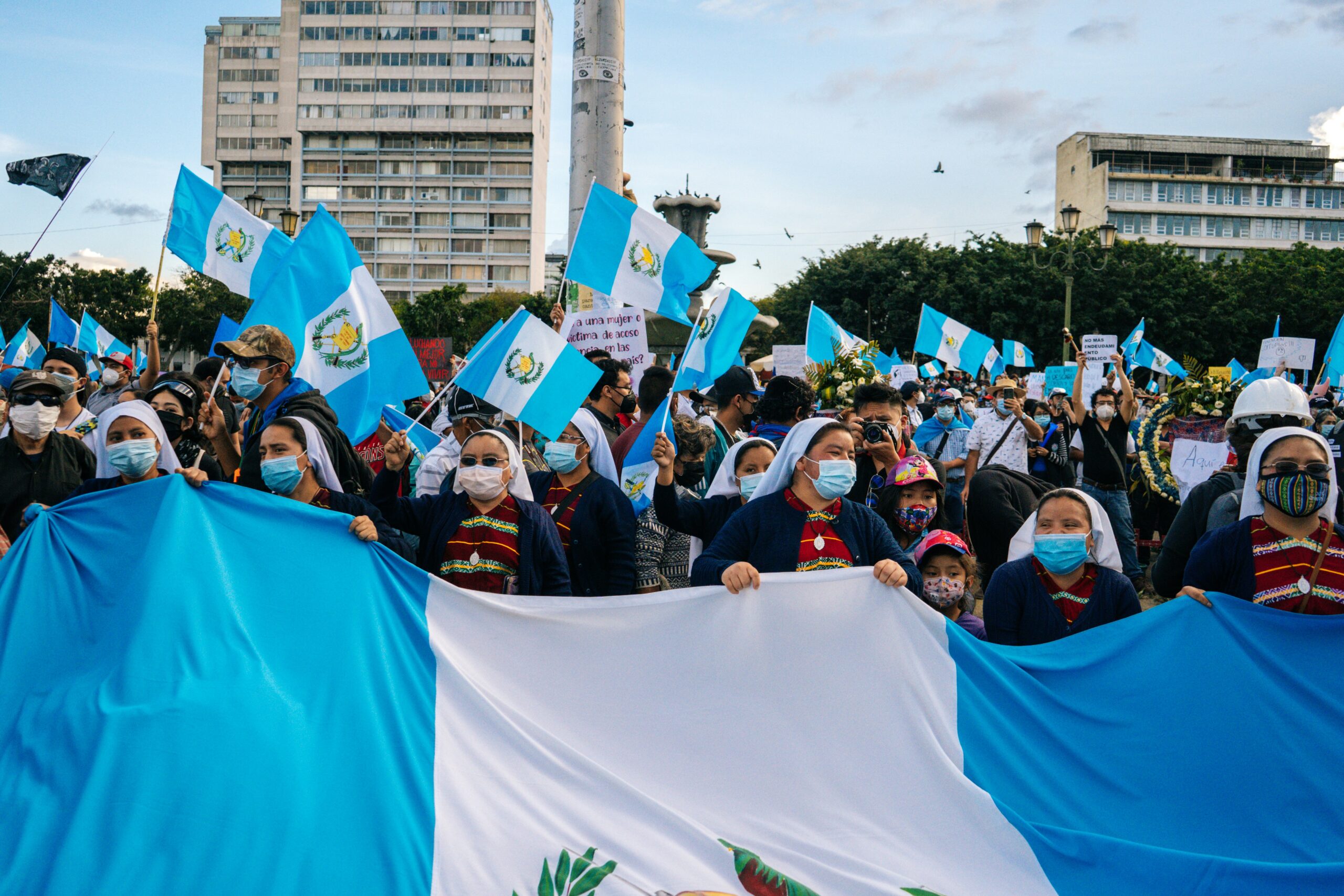To all of them the Guatemala flag represents a powerful symbol of national identity, history and future. Even the way it’s designed speaks to the hardships, victories, and cultural richness of the people in Guatemala. In this post, I will analyze those parts of the flag and explain what they represent within Guatemalan history and culture.
Table of Contents
What is the Design of the Guatemala Flag?
The flag of Guatemala displays the unique pattern of three vertical stripes — a white stripe in the middle with two Sky Blue ones on opposite sides. It is (ately so, of divinely ideas rich omens m), and the national emblem centred in the white stripe. Every part of the flag serves a specific purpose and tells something of the nation’s values, heritage, and aspirations.
1. Colour Significance
Flag colours are an important part of the symbolism of flags and the Guatemala flag is no different. The selection of each colour is carefully made to symbolise certain ideologies and attributes of the country.
- The light blue is meant to symbolise the sky over the two oceans (Pacific Ocean and Atlantic Ocean ) that Guatemala is located between. It is the colour of peace, calm and liberty which also expresses the natural colours of motherland India. This reflects Guatemala’s dream to live in peace both internally and with neighbouring countries. Lightblue — Hope for a future where the peace is bigger than the conflict.
- White: The white horizontal band in the middle stands for purity and peace. It is a reflection of the desire for unity and harmony among the diverse communities living together in Guatemala. Symbol of white signifies the vision of the future to achieve prosperity through peace and harmony amongst citizens regardless of their ethnicity. Shows us that the way to go is by working together and with mutual respect.
2. What is the National Emblem?
This flag is the national emblem, which is situated quite on top of the majority of its opposite number within a white stripe. The emblematic representation is full of symbolism, mixing different components that represent historical and cultural aspects of Guatemala.
a. Quetzal Bird
Quetzal (-Pharomachrus mocinno) the national bird of Guatemala It is illustrated in the middle of the badge, denoting emancipation and sovereignty. The quetzal is in Mexico the symbol of national commitment to keep its sovereign and natural wealth alive. It is a culturally significant bird, appearing frequently on Mayan totems and other artwork from that era reflecting both freedom (seeing the quetzal in captivity causes its death) and wealth as only male birds had the coveted long tail feathers which were worn by Maya Nobility.
Connecting the island of Isabela with its airport to the nearby town, this boardwalk measures approximately 1.6km long and offers fantastic views of a tranquil lagoon backed by mangroves, even if there isn’t much wildlife on show; placards along the way illuminate the region’… The bird is emblematic of the mental and spiritual endurance of the Guatemalan people refusing to let struggles overcome their own unique brand of Lajuj B’atz ˈcultural awareness.
b. Scroll
The scroll that is carried by the quetzal says “15 de Septiembre de 1821”, a key event in Guatemalan history corresponding to its independence from Spanish colonial rule. This date is especially solemn, as it brings to mind the trials and tribulations faced by the people of Guatemala in their battle for independence. In addition to honouring the memory of those who campaigned for independence, the scroll is a reminder that subsequent generations must follow the path of freedom, self-determination and equality.
More broadly the scroll evokes the long struggle of the Guatemalan nation to a democracy ruled based on their best interest. It symbolises the aspirations of a people longing for political stability and social justice.
c. Laurel Wreath
Both the laurel wreath looped around the quetzal are symbols of victory, honor and accomplishment. Laurel wreaths were a powerful symbol of victory and status for the victors of athletic competitions. It was associated with numerous advancements in other areas by success achieved within ancient Rome. The laurel A symbol that in the Guatemalan flag means, they hope for peace and prosperity in front of any difficulty.
As a symbol, it serves as a timeless reminder of the way in which Guatemala have overcome its relenting challenges: social unrests, economic struggles and natural disasters, always seeking for greatness to benefit all its people. In their resilience, the laurel wreath reminds Guatemalans to keep fighting for progress in all its forms, and promoting excellence, on a personal level or as a society.
3. What is the Historical Context?
The design and symbolism of the flag of Guatemala has evolved in the years reflecting its rich historical narrative. The flag was adopted on August 17, 1871 when it was created during a period of national struggling and consolidation shortly after gaining independence from Spain. These elements of the flag encapsulate the long journey of the Guatemalan people in their struggle for freedom, cultural lineage and resilience.
The flag was adopted in a period when many Latin American countries were forming their identities shortly after their breaking from Spain. The images on the flag symbolise the Guatemalan people, quetzal the national bird was added to the coat of arms and independence date — September 15, reflects a sense of independence which is still being moulded
4. What is the Role of the Flag in National Identity?
The Guatemala Flag is a very forceful symbol of national pride and unity. It is raised on national holidays, during celebrations and public events as a reminder to the people of their common history and beliefs. It is a lot more than a flag, it builds pride and goodwill into the collective Guatemalan consciousness, unifying them for their country’s good with respect to their roots.
For the Guatemalan people, the flag has a historical and symbolic meaning beyond its representation; it represents their fears and aspirations in an image. It encourages togetherness amongst various ethnic groups who together must remember with one another to build a better tomorrow. Sure, the flag itself is a field where one can be called to remember the significance of national pride and how they play a part in a greater whole.
5. The Flag in Contemporary Society
Today in Guatemala the flag is a major aspect of its national identity and culture. It hangs up in schools, and government buildings around the nation and homes as a reminder of the values and Principles this nation stands for. The flag is frequently used in art, music and literature representing the deep emotions that it provokes among Guatemalans.
Festivities, Parades and CeremoniesThe flag plays a central character in the festivities for significant national events such as Independence Day on September 15. The flag being displayed during these events gives a sense of identity to a people, and further perpetuates the conception of them as part of a larger community with common roots
Conclusion
So the Guatemala flag means a lot to the nation as it separates it from other nations. Its design is light blue and white with the national emblem, has a quetzal bird (symbolizing freedom), scroll bearing the date of independence, crossed rifles to represent work force, sword with laurel branches symbolizing peace. Recognizing what each of these elements symbolizes helps to better understand the significance of Guatemala’s rich cultural history and its people’s transition from captivity to a serene future. The flag represents the common life and strength of the Guatemalan people, giving them memory of their roots as well as incentive to a brighter future. The flag unified Guatemalans with their shared identity and values, it served as a powerful symbol of national pride — binding them together in the quest for progress.



